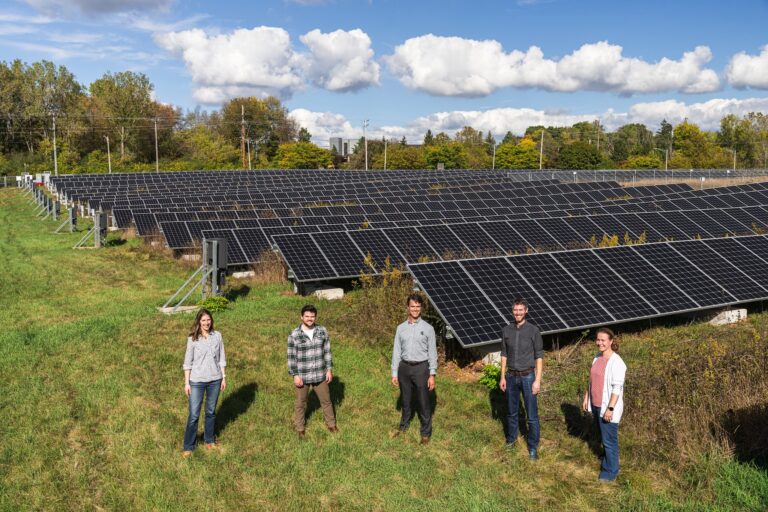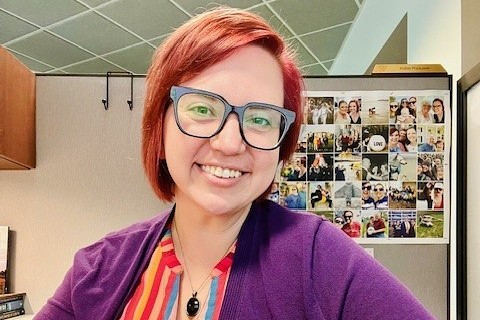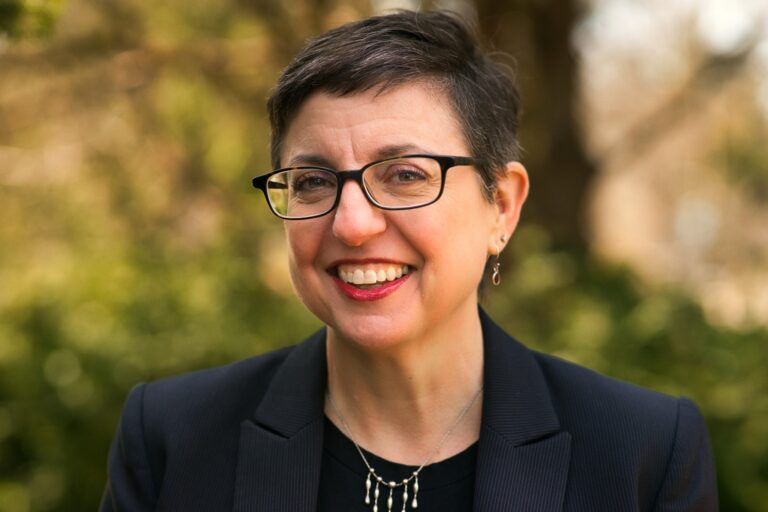Blaire Morseau started doing beadwork 20 years ago, first learning how to create on a loom and then teaching herself beaded embroidery. Her beaded creations even helped pay her rent when she was a graduate student at the University of New Mexico.
Morseau is now an Assistant Professor in the Department of Religious Studies at Michigan State University and an 1855 Professor of Great Lakes Anishinaabe Knowledge, Spiritualities, and Cultural Practices at MSU. However, throughout her career, she also has continued to create beautiful beadwork designs, transforming ordinary objects into works of art.
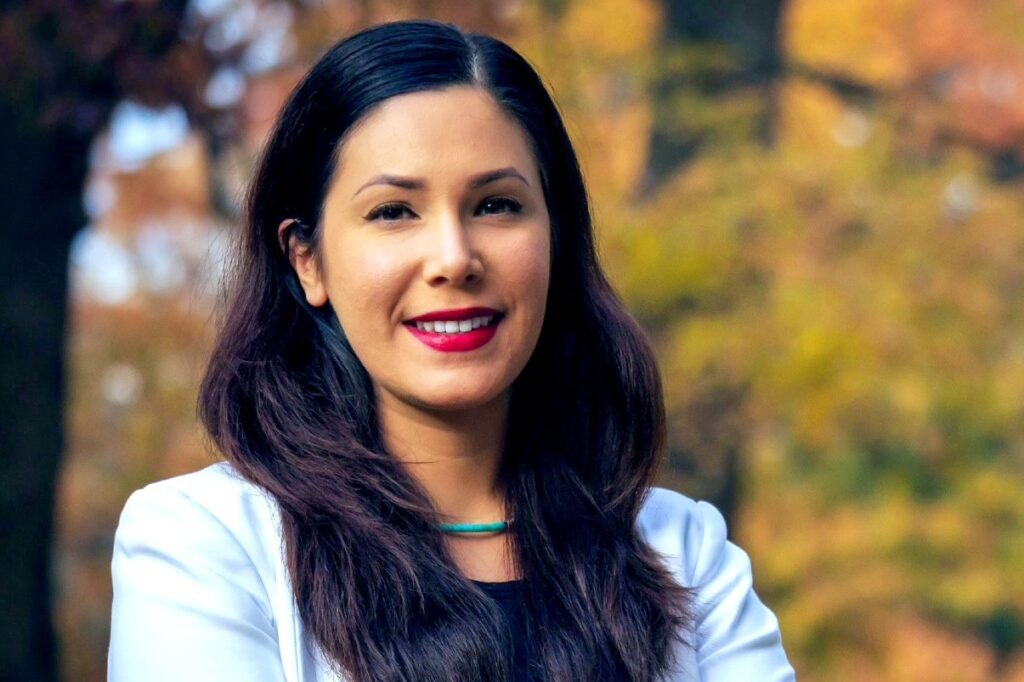
A citizen of the Pokagon Band of Potawatomi Indians, Morseau recently was commissioned by the Field Museum in Chicago to make a pair of beaded, center-seam Potawatomi moccasins with her family’s distinct flower symbol, a process that she estimates required about 40 hours. She also was selected as a 2025 Artist-in-Residence at MSU’s W.K. Kellogg Biological Station (KBS) located in Hickory Corners, Michigan.
Known as an educator more than an artist, Morseau has never done an artist residency before and says she is looking forward to using the KBS landscapes to inspire her woodland style of beadwork. According to Morseau, woodland style is a broad term that refers to Native artwork from the woodland areas of North America. Much of this artwork encompasses floral designs or nature scenes, given the abundance of natural beauty that lies in these habitats.
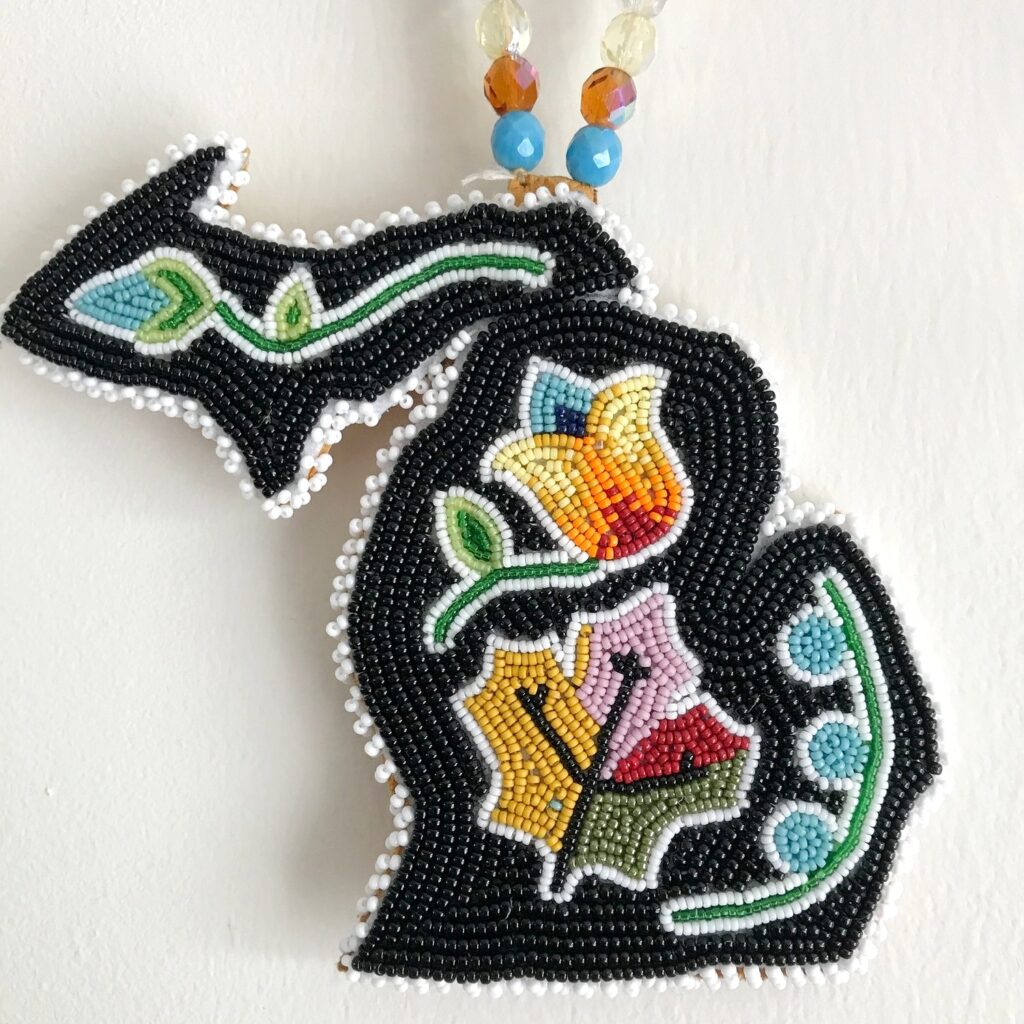
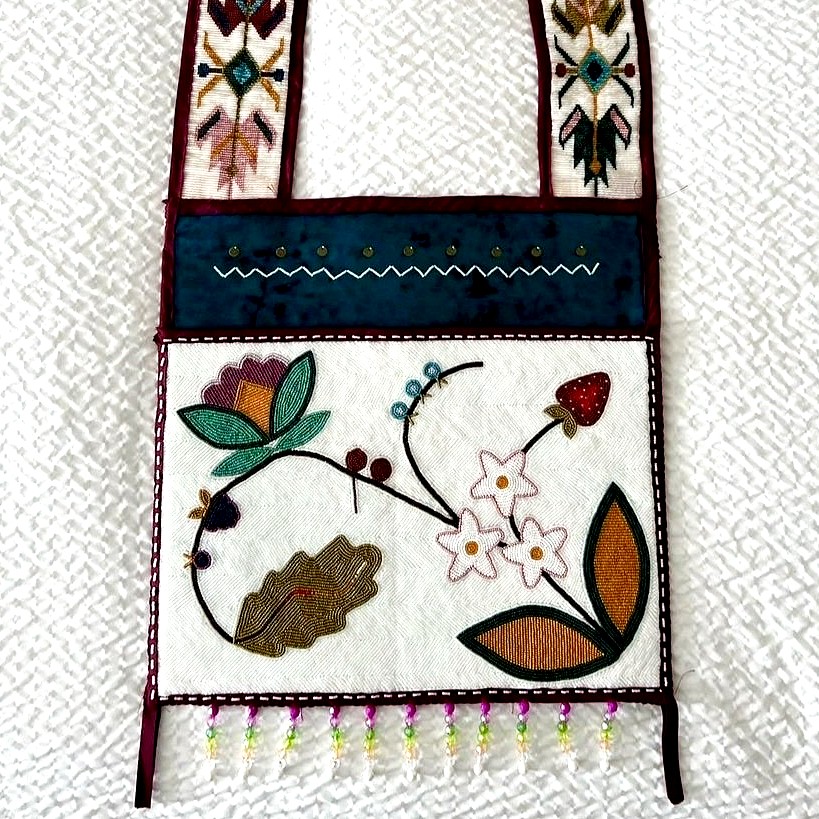
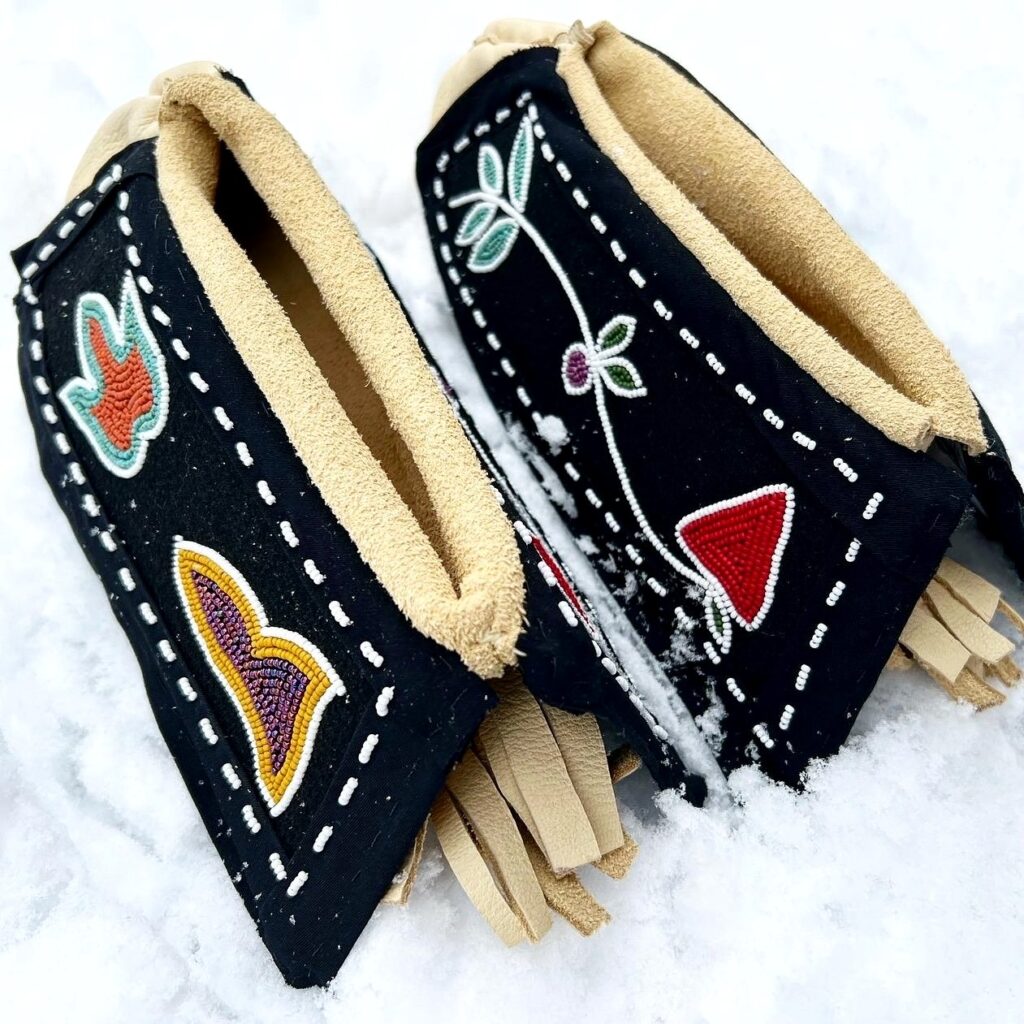
“A lot of my Anishinaabe beadwork and birch bark designs already imitate and tell stories about the natural world and relationships,” she said. “For example, there might be a milkweed plant next to a monarch butterfly or the demonstration of similar ecological relationships in that way.”
At the same time, Morseau also is intrigued by the merging of past and future in the art of her ancestors and contemporaries and is looking forward to incorporating pop culture and science fiction elements into her own art, which aligns with her research focus that traces the roots of Indigenous science fiction and futurism in America.

Always searching for ways to incorporate her research as well as her cultural background and practices into the classroom, Morseau sometimes shares her artwork with her students if there is a pedagogical purpose. For example, she once used her beadwork to help illustrate the different forms of data.
“I was explaining to them the difference between datum, like a singular form of data, versus data versus metadata,” Morseau said. “So, the datum was a bead. The data was a beaded pair of earrings because it’s starting to take shape, there’s starting to be a pattern. And the metadata was the story behind the design.”
Plans for Artist Residency
Morseau plans to use some of her residency, which takes place June 15-19, 2025, to produce a new and particularly challenging piece of work known as a bandolier bag.
“Bandolier bags are enormous, usually fully beaded bags,” Morseau said. “Typically, men wear them, but sometimes women do too. And in our culture, it’s sort of a status of wealth because they take hundreds of hours to make if you have one. That either means you have a friend or relation who has the kind of skill set and time to make you one, or you have enough money to pay somebody to make it for you.”
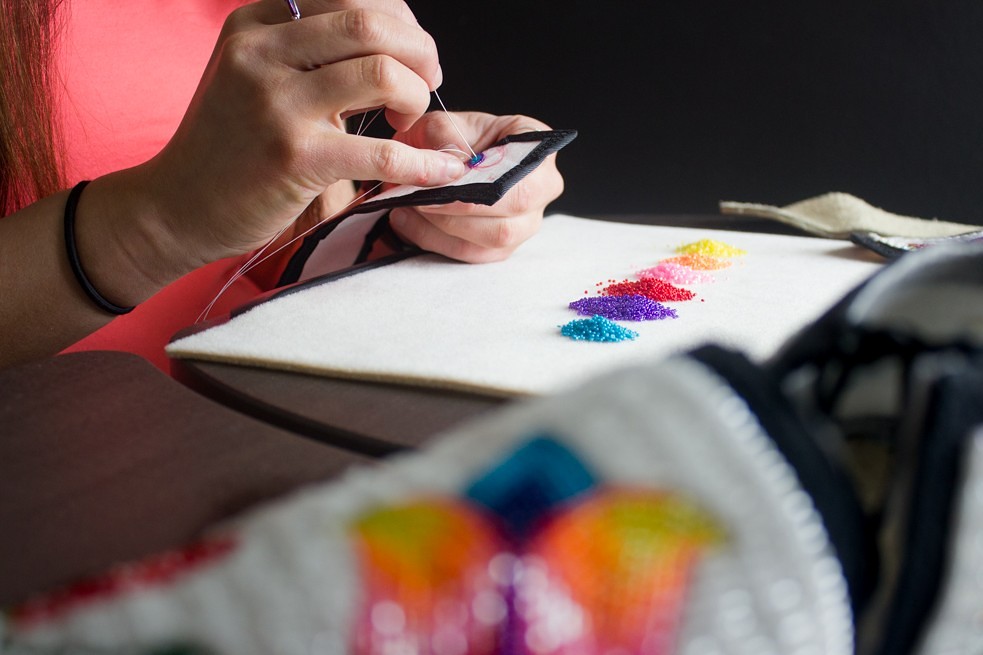
Other than her plans to make a bandolier bag, Morseau says she’s looking forward to seeing what develops creatively and to being inspired by the beauty of the KBS location. Most of the beadwork she creates is for various regalia pieces that someone has commissioned her to do, so she welcomes the creative freedom that comes with this artist-in-residence opportunity.
“I usually am making something that is someone else’s favorite colors, their clan symbols, or how they want rather than me experimenting,” Morseau said. “So, I’m hoping to do a lot of experimentation with both traditional Potawatomi aesthetics and motifs and combining those with more pop culture and science fiction references. What that looks like at the end I’m not quite sure, but that’s where my heart’s taking me.”
2025 KBS Artists-in-Residence Cohort
The KBS Artists-in-Residence Program was launched in 2022 by Gretel Van Wieren, Professor in the Department of Religious Studies at MSU, in collaboration with Elizabeth Schultheis, Education and Outreach Coordinator for the Long Term Ecological Research (LTER) program at KBS, and Nameer Baker, KBS LTER Science Coordinator, as a way to promote art and science collaborations.
The program offers artists, working in any genre, a one-week immersion at KBS where they collaborate with scientists, students, and teachers, linked by their mutual passion for observing the world around them and their desire to understand and replicate the patterns present throughout nature.

During the week-long residency, artists become acquainted with KBS and the research taking place at LTER and the field station. They have opportunities to spend time in the field and to participate in lab activities, research, and observation. They also are given the opportunity to return to KBS throughout the summer, if desired.
The program culminates with a return visit and public exhibition when they share their work and experience with the KBS community.
This is the fourth year for the program, but the first time an artist-in-residence has come from Michigan State University or MSU’s College of Arts & Letters. Two other artists-in-residence selected for the 2025 cohort also are connected to MSU’s College of Arts & Letters. They are:
- Mikayla Thompson, a poet with Cherokee Nation descent who graduated from MSU in December 2023 with a B.A. in Linguistics and a minor in Indigenous Studies. Her residency took place June 2-9, 2025.
- Liv Furman, whose primary mediums include multimedia and digital collage, ceramics, quilting, and the written and spoken word, is a Post-Doctoral Scholar and Research Associate in MSU’s Department of African American and African Studies and an Assistant Project Director of the Quilt Index’s Black Diaspora Quilt History Project at MSU. Furman’s residency will take place July 28-Aug. 1, 2025.
The fourth 2025 artist-in-residence selected is:
- Marika Jaeger, a self-taught New York-based artist who divides her time between environmental research at Stanford University and painting. Her residency is scheduled for July 3-10, 2025.
The 2024 Artist-in-Residence, Erica Bradshaw, who is a Kalamazoo-area author, illustrator, and muralist, is scheduled for her residency exhibition, titled “Now and Then: An Artist’s Reflection on a Century of Research,” on July 18, 2025, from 5 to 9 p.m. at the W.K. Kellogg Bird Sanctuary’s Overlook Building, 12685 East C Ave., Augusta, Michigan. At this time, Bradshaw will share pieces inspired by her time spent interacting with the people and habitats at KBS.
For more information on the 2025 KBS Artists-in-Residence cohort, see the previous article, “First MSU Faculty and Alum Selected for Artists-in-Residence Program at W.K. Kellogg Biological Station,” published by MSU’s College of Arts & Letters.
For more information on the KBS Artists-in-Residence Program, visit the KBS LTER website.
By Lynn Waldsmith and Kim Popiolek
